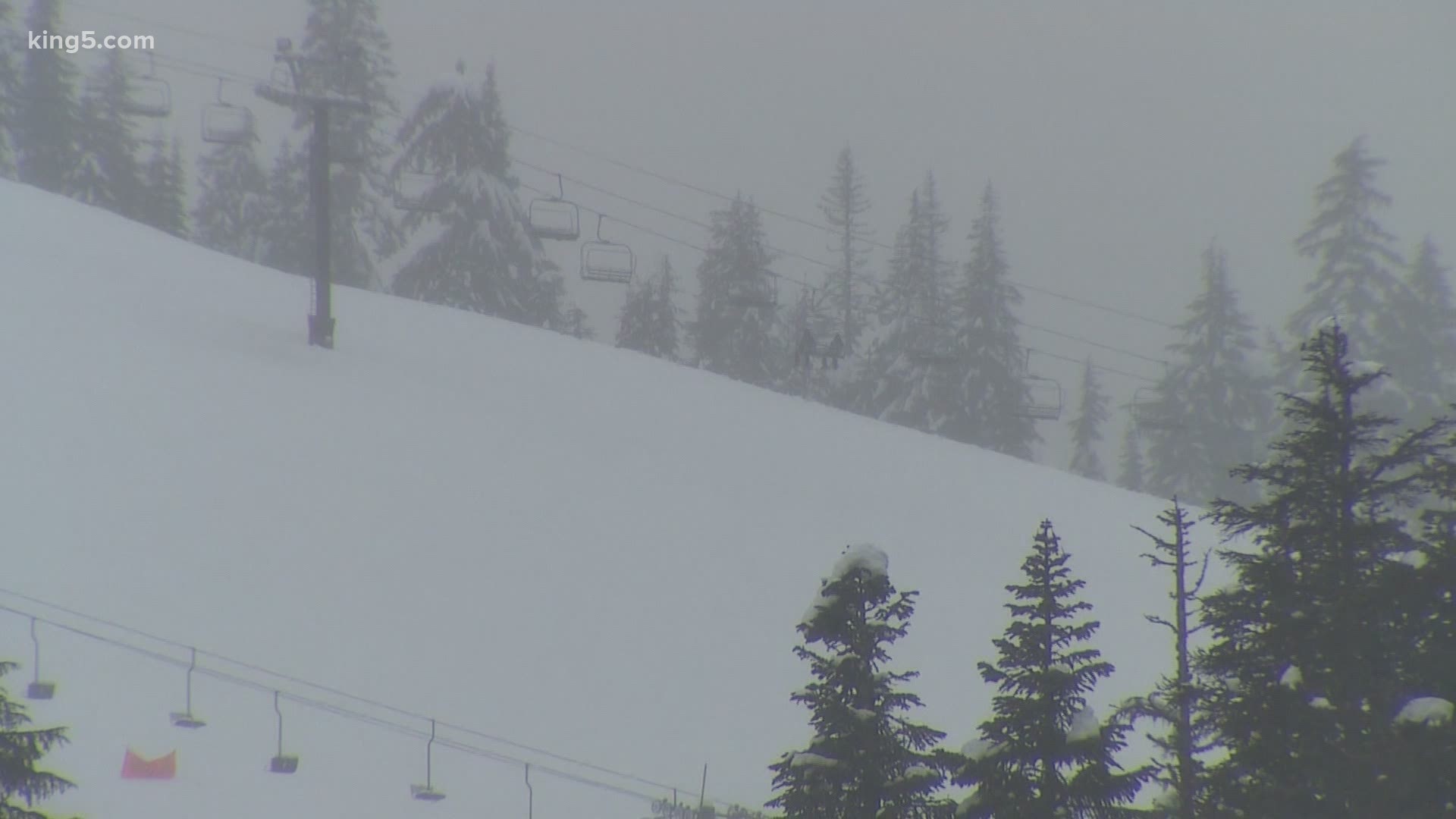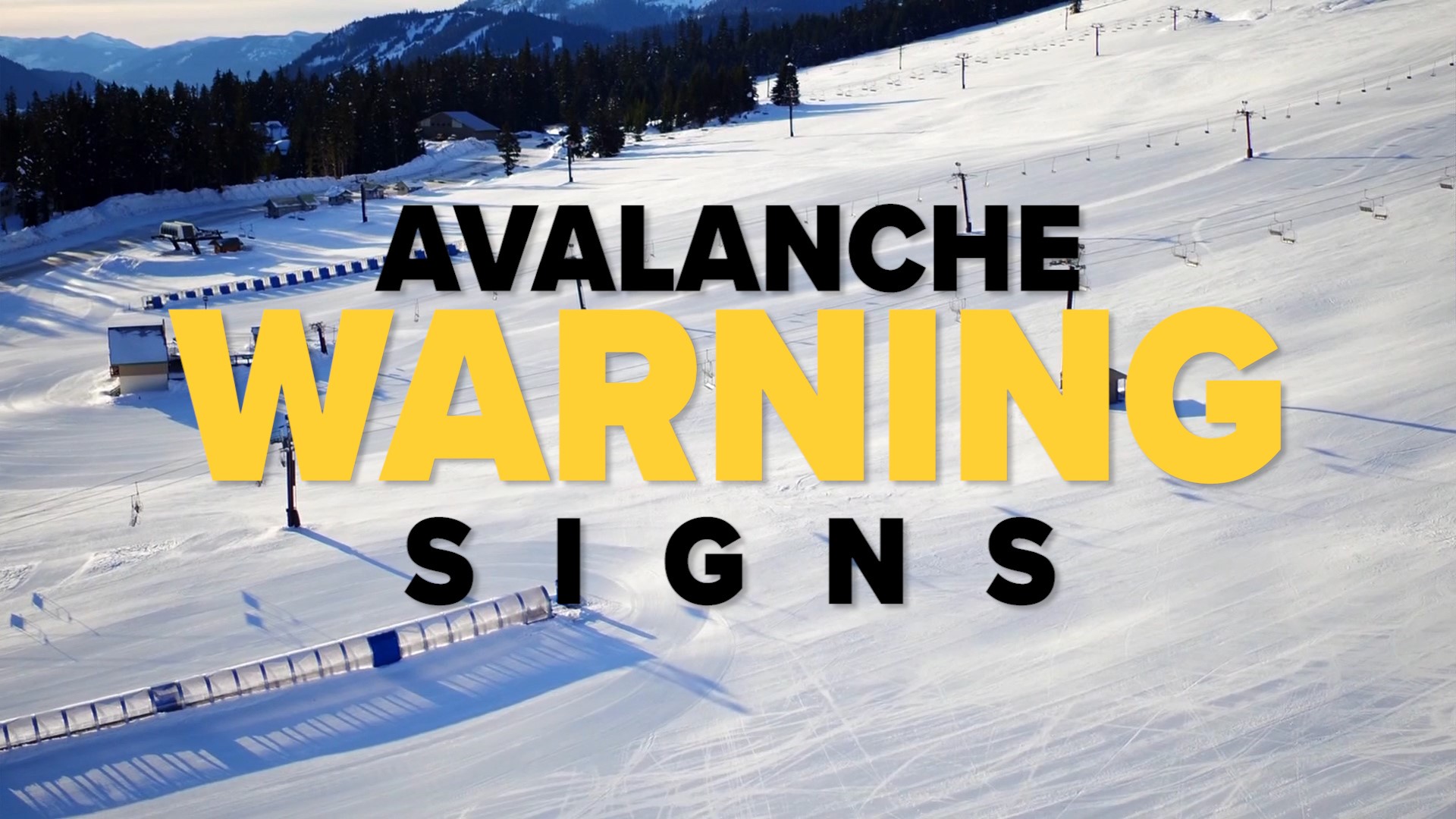SNOQUALMIE PASS, Wash. — Highway 2 over Stevens Pass reopened around 7:30 a.m. Tuesday after avalanche danger forced an overnight closure.
Stevens Pass was only open for about three hours Monday. Crews reopened it at 2 p.m. after a nearly 20-hour closure due to avalanche danger. However, they closed it again at about 4:45 p.m. due to the new slide at milepost 74.
Mountain pass closures
Multiple highways over mountain passes in Washington closed Sunday evening due to heavy rain and increased avalanche danger, according to the Washington State Department of Public Transportation (WSDOT).
Over a 24-hour period, up to 3 inches of rain fell.
Rain adds weight to snowpack while weakening it at the same time and triggering avalanches.
SR 20 in the North Cascades closed in both directions at milepost 120 due to a small avalanche and the potential for more, WSDOT said. The closure is near Newhalem, and the east side closure point is at Early Winters at milepost 177. WSDOT is advising all travelers to avoid this route.
I-90 over Snoqualmie Pass reopened to traffic Monday at noon after being closed for 18 hours. Around 5:45 p.m., KING 5 Environmental Reporter Michael Crowe caught an avalanche on camera, while reporting along Snoqualmie Pass:
US 12 over White Pass reopened Monday at 10 a.m. after being closed for 16 hours due to increased avalanche danger.
Avalanche danger
The Northwest Avalanche Center (NWAC) reported Tuesday that avalanche danger remains high for all zones in the Central Cascades, including Stevens and Snoqualmie passes. This means natural avalanches are likely and travel in avalanche terrain is not recommended.
Scott Pattee, water supply specialist for the Natural Resources Conservation Service, said the snowpack in Washington is unusually unstable right now thanks to a variety of factors.
“This year it has just come in these big dumps,” he said. “And between cold weather, above normal temperature weather, normal weather, rain on snow events, there are ice layers in the snowpack in some places.”
The varied makeup of various snow layers leads to instability he said – especially when rain loads the upper levels with moisture and weight.
“It doesn’t take much when snow is piled up the way it has,” he said.
It’s why he echoed the warning from the Northwest Avalanche Center – avoid avalanche terrain until conditions improve.
A Winter Storm Warning lasts through Tuesday at 10 p.m. with heavy snow expected above 2,000 feet in the Cascades. Total accumulation at the passes is expected to be between 18 to 24 inches, according to the National Weather Service.
RELATED: Western Washington forecast
Snowpack
Several mountain passes in Washington have received above average snowpack this season.
WSDOT reported on Friday Snoqualmie Pass has received a significant amount of snow this season, pushing its snowpack to levels not seen in about a decade.
The pass had a snowpack of 128 inches as of Feb. 19, according to data from WSDOT.
The WSDOT data shows there has been 358 inches of snowfall so far this season. The department said Friday that 14 more inches of snow will exceed the 10-year season average.
Last season's snowfall total was about 345 inches.
Over the past 10 years, snowfall has ranged from 104 inches to 470 inches.
This season, Stevens Pass has received 378 inches of snow and had a snowpack of 127 inches, as of Feb. 19.



